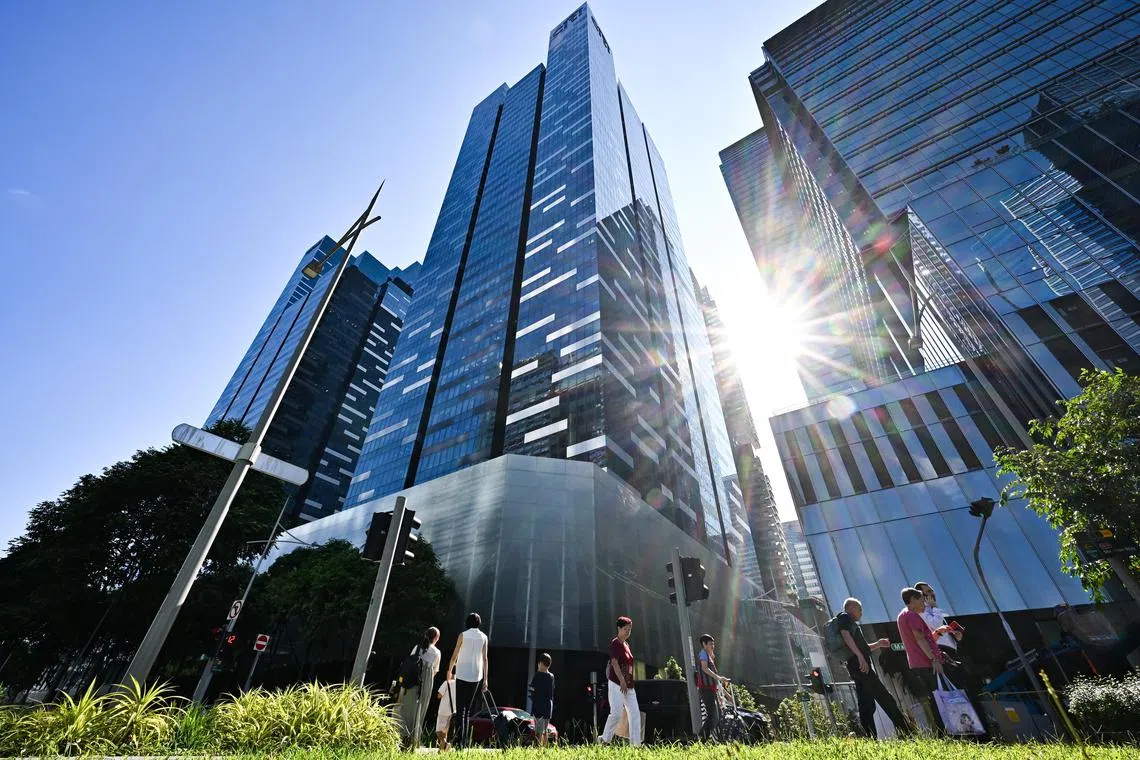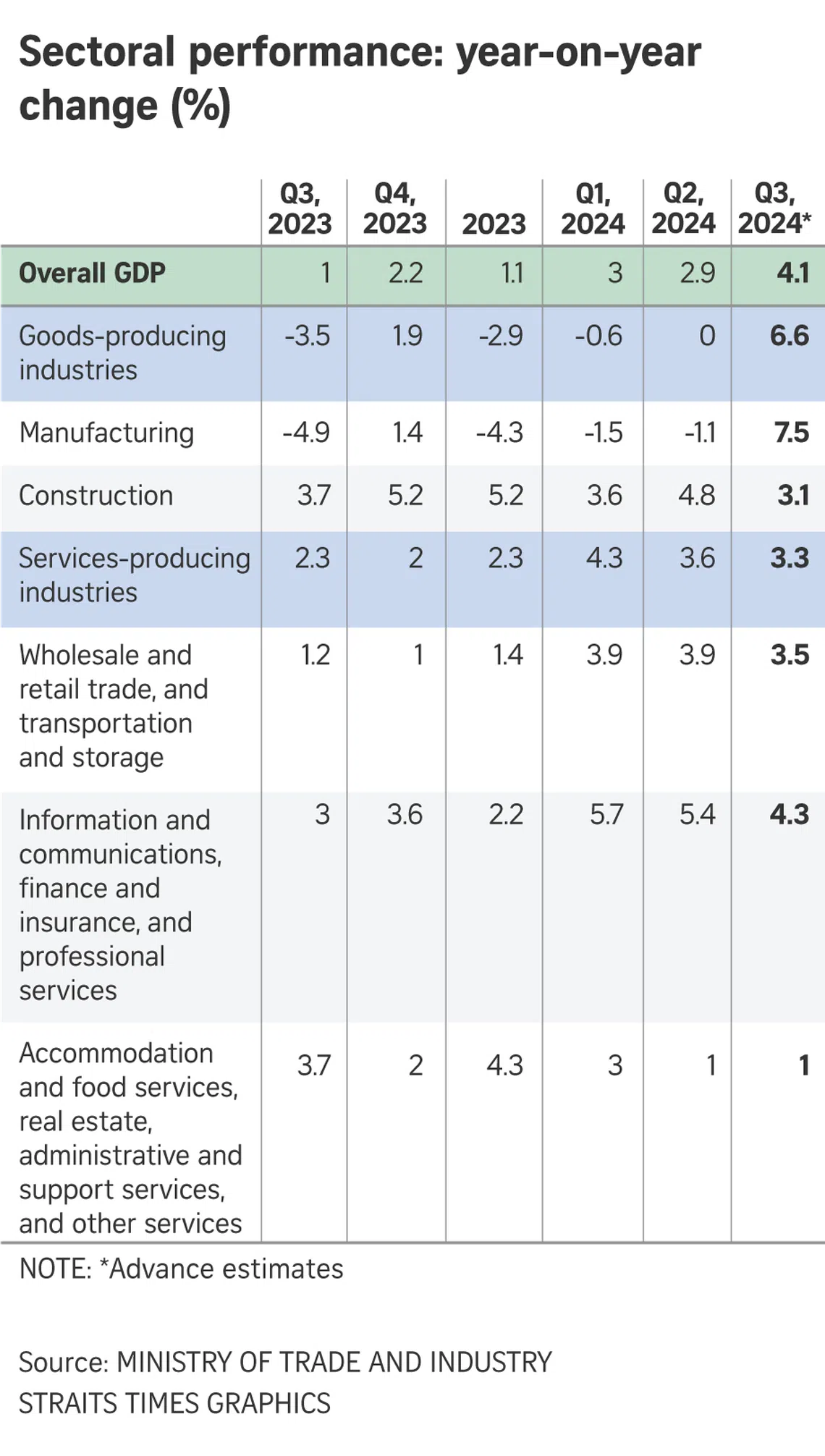Singapore economy grows 4.1% in Q3, more than expected, on manufacturing rebound
Sign up now: Get ST's newsletters delivered to your inbox

Economists polled by Reuters had expected economic growth of 3.8 per cent in the July to September period in Singapore.
PHOTO: ST FILE
Follow topic:
SINGAPORE – A rebound in electronics helped Singapore’s economy grow 4.1 per cent year on year in the third quarter of 2024, much faster than the 2.9 per cent growth in the previous quarter, according to official advance estimates.
Economists polled by Reuters had expected growth of 3.8 per cent in the July to September period.
On a quarter-on-quarter seasonally adjusted basis, the economy expanded by 2.1 per cent, the Ministry of Trade and Industry said on Oct 14. This is faster than the 0.4 per cent growth in the second quarter.
The growth acceleration came on the back of a manufacturing rebound.
The sector expanded by 7.5 per cent year on year in the third quarter, after contracting 1.1 per cent in the previous quarter. The growth was led by output expansions across all manufacturing clusters, except for biomedical manufacturing.
OCBC Bank chief economist Selena Ling said the sharp manufacturing rebound, after two consecutive quarters of contraction, was led by electronics.
She said there is expectation that Singapore’s economy “is likely to be sustained by the ongoing upswing in the electronics and trade cycles”.
Adding to that is the easing in global financial conditions as central banks cut interest rates, so officials believe the full-year economic growth is likely to come in around the upper end of the 2 per cent to 3 per cent forecast range, Ms Ling noted.
“This is in line with our house forecast of 2.9 per cent year on year for 2024 gross domestic product growth, albeit the advance growth estimate could be revised down a tad when the September data is subsequently made available,” she added.
The Government in August upgraded its 2024 growth forecast to 2 per cent to 3 per cent, the upper end of its previous forecast range of 1 per cent to 3 per cent.
UOB associate economist Jester Koh said in a note that the year-on-year and quarter-on-quarter figures beat consensus estimates.
“Factoring in the strong third-quarter performance, we raise our 2024 full-year growth forecast to 3.3 per cent from the previous 2.9 per cent, but we lower our 2025 forecast to 2.9 per cent from 3.2 per cent previously,” he said.
In the third quarter, the construction sector grew 3.1 per cent year on year, slowing from 4.8 per cent in the second quarter, with growth coming from an increase in public-sector projects.
Among services industries, the information and communications, finance and insurance, and professional services sectors collectively grew 4.3 per cent, although this was slower than the 5.4 per cent growth in the second quarter.

Growth in these sectors was supported by expansion in segments like information technology and information services, and head offices and business representative offices.
In particular, the finance and insurance sector grew on the back of an expansion in activity across all segments, especially banking, activities related to financial services and fund management.
The wholesale and retail trade, as well as transportation and storage sectors, collectively expanded by 3.5 per cent in the third quarter, extending the 3.9 per cent growth in the second quarter. The retail trade sector was the only segment that did not post growth in the third quarter.
Growth in the accommodation and food services, real estate, administrative and support services and other services sectors was unchanged at 1 per cent in the third quarter.


